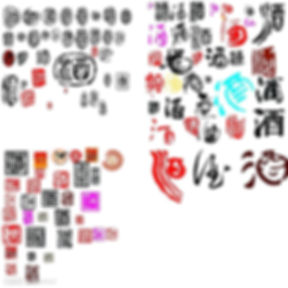Alsace vs Austria vs Germany Riesling

This blind tasting hosted last year is exciting. It compares star( F.E. Trimbach, Joh Jos Prum and F.X. Pichler) and inspiring( Bründlmayer, DR Wolf, Bert Simon, Schlumgberger Kitterle)producers. It also demonstrates the ageing potential of Riesling from the two countries.
In writing about this humbling tasting, I realise once again my lack of sense and sensibilities for rieslings, as well as a great dearth of right vocabularies.
The first glass gives bright and ripe stone fruit and the touch of botrytis. Classic Riesling, balanced with length, intensity and is complicated. It's my First; Group's Second. It's Domaine Zind Humbrecht, Herrenweg De Turckheim, Riesling, Alsace 2006 from well-drained, warm soil.
The second glass gives cooked fruit, and is meaty and oxidative in style. With cooked fruit tones( such as apples), the long palate falls short of fresh fruit and is saline and mineral. My 10th; Group's Last. It is F.E Trimbach, Riesling Cuvee Frederic Emile, Alsace 2007. That may seem not possible if one looks into the high scores JS, WE and WS scores.
The tasting of the third glass shakes my confidence. It is my 6th; Group's 9th! The tasting notes jot all the typicities, intensity and complexities, as well as great fruit! It is an F.E Trimbach, Riesling Clos Sainte Hune, Alsace 2006.
The fourth glass nose citrus with dimension. With lots of tension on the palate, it tastes smart, long and intense. I cannot understand by now how I under-rated another one, again. This is my 8th; Group's 11th. It is a Kitterle, Schlumberger/Elsass Riesling 2005 from grapes 4 Grand Cru sites.
The 5th glass gives excellent nose. The tension-filled palate gives a lot of stone fruit and is long. It is my 4th; also Group's 4th. It is Dr Burklin Wolf, Riesling, Trocken, Auslese Pflaz 1990.
The 6th glass stands out in being a very aged riesling. It is still good with baked pears and apricots, with lots of wood spices. The palate seems exciting but is flat for me. I rate it Last; Group's 6th. It is the un-referenced Weinguter Geheimrat J. Wegeler Oestricher Lenchen Riesling Spatlese, Rheingau 1959. One week ago, I tastes the same wine from vintage 2006.
The 7th glass is honey-suckled, filled with citrus and stone fruit and finishes long. My 9th; Group's 8th. It is Joh Jos Prum, Wehlener Sonnenuhr, Riesling Auslese, Mosel Saar Ruwer 2007. There are lots of variances in the tasting.
The 8th glass drums on a different beat, giving lots of white flowers(like jasmine) tea leaves. Ripe is fruit on the nose and on the palate, which is citrusy, saline, oxidative with edging acidity. Unfortunately I under-rated it 11th; Group's 3rd. It is Bert Simon Weingut Herrenberg, Serriger Herrenberg, Riesling Spatlese, Mosel Saar Ruwer 1988.
The 9th glass gives multi-layered citrus(fruit, spice, skin), orange flowers and bread. The palate reflects the nose and is very balanced and intense. My Second; Group's 4th. It is Rudi Pichler, Riesling Smaragd Achleithen 2010.
The 10th glass gives lots of 'wows'. Balanced, deep, saline with lots of fruit spices. It is my 3rd; Group's 1st! It is F.X. Pichler Riesling Smaragd Kellerberg 1998.
The 11th glass is still with green tints. It has lots of dimensions in the nose(floral, lime fruit. On the palate, it reminds starfruit and gives lots of softness and intensity. It is my Second; Group's 4th. Again, there are lots of preference variation. It is Bründlmayer, Riesling Zöb.Heiligenstein Lyra DAC Reserve 2005.
The 12th glass is classic. However, the palate falls short of the structure I would like to taste. It is a delicious wine though. My 5th; group's 10th. It is Prager Riesling Smaragd Wachstum Bodenstein 2004.
It is an 'intimidating' tasting.






















